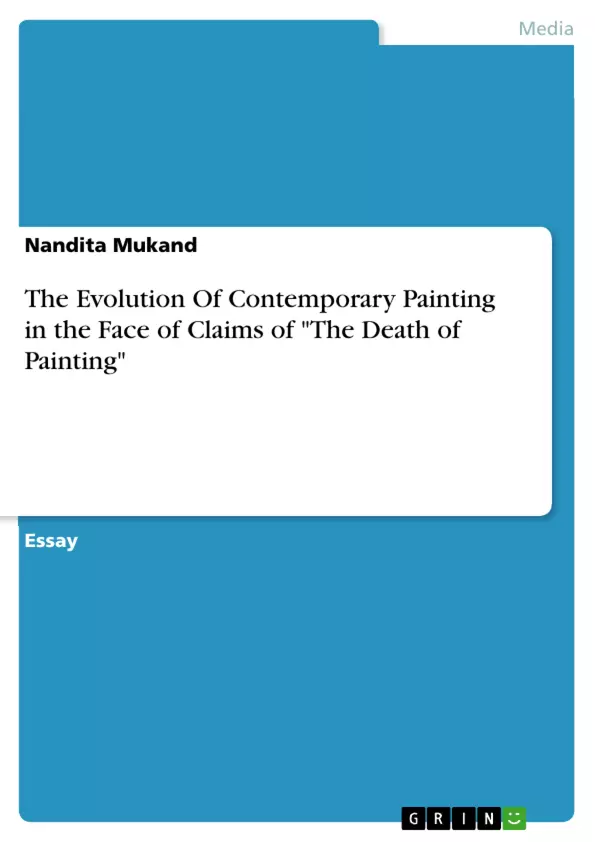Throughout the late 1960s and 1970s the pronouncement that painting was dead was often heard. In 1966 Andy Warhol had an exhibition at the Leo Castelli Gallery that featured hot pink and yellow wallpaper with large images of a cow’s head. It was as though Warhol were saying that the painting was expensive wallpaper. “Andy killed painting,” was the popular conventional wisdom of the day.
But painting did not die, only the limited assumptions of what a painting was, or could be.
Painting, freed of the restraints of a modernist creed, is reborn into an art form that is not only more accessible to the masses but also more multifaceted than it has ever been before. Once more the emergence of new art forms has forced painting to greater heights just as the arrival of photography did more than a century ago.
Inhaltsverzeichnis (Table of Contents)
- Vasari's and Greenberg's influence on the “life” and “death” of painting
- Painting and the emergence of other forms of artistic expression
- The Rejuvenation of Painting
Zielsetzung und Themenschwerpunkte (Objectives and Key Themes)
This text explores the evolution of painting, specifically addressing the pronouncements of its "death" in the late 20th century. It examines how various artistic movements and technological advancements challenged traditional definitions of painting, ultimately leading to its revitalization.
- The influence of historical narratives on the perception of painting
- The impact of new artistic movements on the art object and its reception
- The role of technology in shaping contemporary painting practices
- The evolution of painting's relationship with the audience
- The enduring relevance and reinvention of painting in the contemporary art world
Zusammenfassung der Kapitel (Chapter Summaries)
The first chapter discusses the influence of Vasari and Greenberg on the perception of painting. It argues that their narratives, while influential, ultimately contributed to the perceived stagnation of the medium by defining its boundaries too narrowly.
The second chapter explores the emergence of various artistic movements in the 1960s, including Pop Art, Minimalism, Conceptual Art, and Performance Art. These movements challenged traditional notions of the art object and its value, leading to a questioning of painting's place within the broader art world.
The third chapter focuses on the rejuvenation of painting in the latter half of the 20th century. It highlights the emergence of movements like Neo-Expressionism and Pattern and Decoration, as well as the impact of technological advancements on painting practices. This chapter ultimately argues for the ongoing relevance and reinvention of painting in the contemporary art world.
Schlüsselwörter (Keywords)
This text explores key concepts such as the "life" and "death" of painting, artistic movements like Pop Art and Conceptual Art, the influence of technology on art, the evolution of the art object, and the role of the audience in shaping artistic practices.
- Arbeit zitieren
- Nandita Mukand (Autor:in), 2012, The Evolution Of Contemporary Painting in the Face of Claims of "The Death of Painting", München, GRIN Verlag, https://www.grin.com/document/295692



